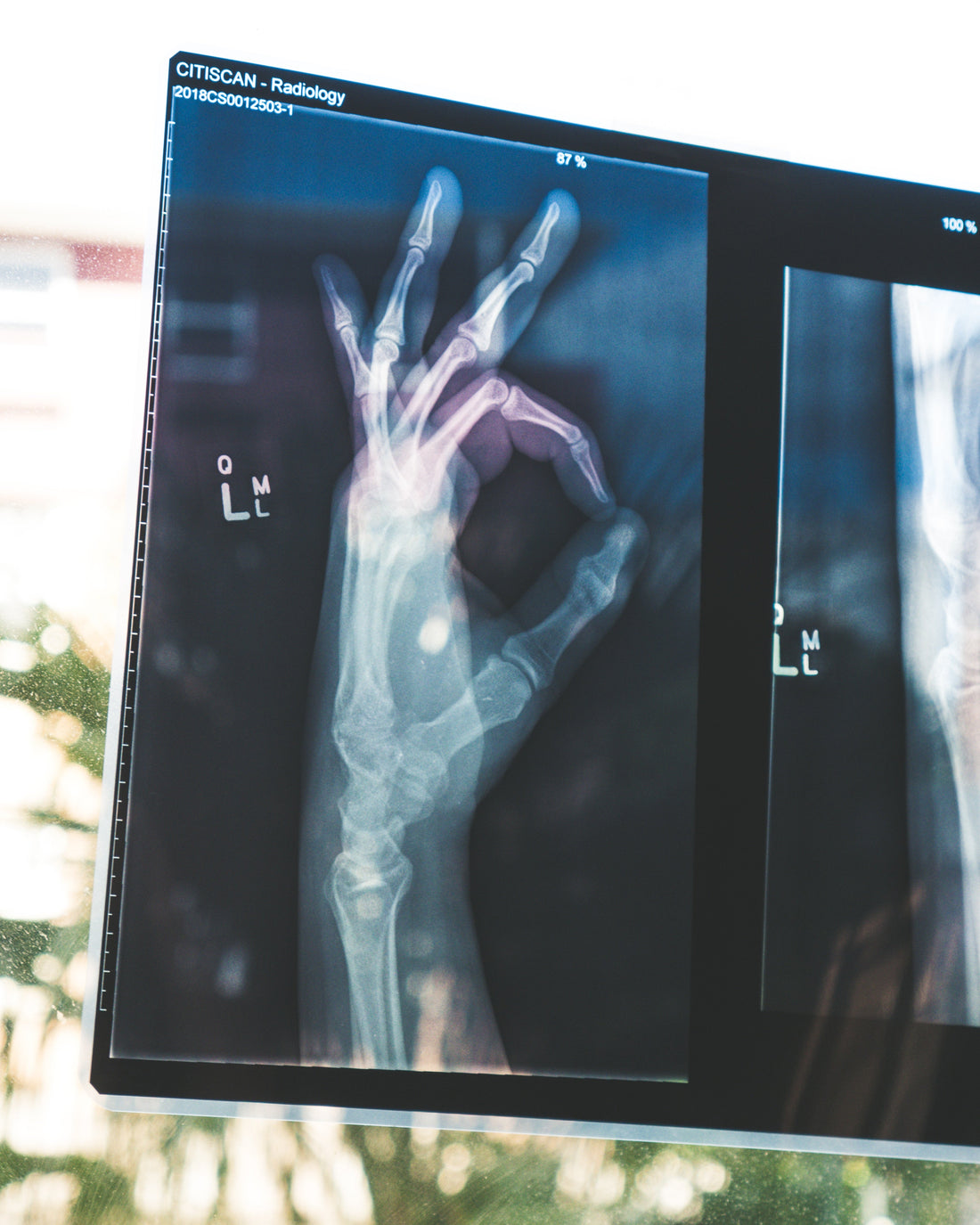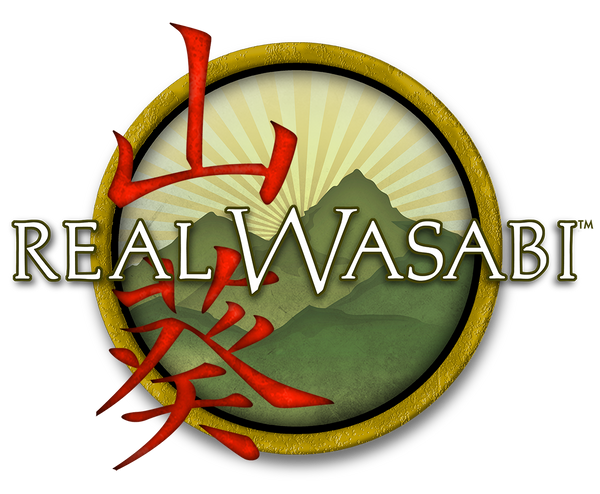Wasabi Anti-Cancer Properties

Wasabi has long been renowned for its flavor complexities and culinary importance. But what’s less known about Wasabi is its potential anti-cancer properties. Recent studies demonstrate Wasabi’s cancer treatment abilities. We know—it's a hard to believe. But the science is there. Check out this article on Wasabi’s anti-cancer properties and see for yourself!
ANTI-CANCER, ANTI-OXIDANT, ANTI-INFLAMMATORY, AND ANTI-BACTERIAL PROPERTIES
From an article by Dave Tuttle, Life Extension Foundation - www.lef.org
Protecting Your DNA from Lethal Mutations
Wasabi japonica is a member of the Brassica, or cruciferous family of vegetables, which includes cabbage, broccoli, cauliflower, bok choy, horseradish, and 10 other plants. These vegetables add crunch and flavor to meals and have long been recognized as important parts of a healthy diet because of their fiber content. Recent research has revealed, however, that there is much more to these vegetables than mere fiber. They contain high levels of glucosinolates, a group of compounds that are converted to isothiocyanates by the enzyme myrosinase when the plant cells are damaged by harvesting, cutting, or chewing. It is the isothiocyanates that give these vegetables their sharp flavors. Wasabi, the green, pungent horseradish usually served with sushi, is one of the most potent sources of isothiocyanates among all plant species.
The isothiocyanates do more than add flavor to a meal. A Japanese study found that allyl isothiocyanate has significant antioxidant actions, particularly against the superoxide radical.22 According to the authors, this phytochemical also has an inhibitory effect on the growth of food poisoning bacteria and fungi and showed anti-mutagenic activity against a common carcinogen found in broiled fish and meat.
Three other Japanese studies discovered dramatic benefits from 6-methylsulfinyhexyl isothiocyanate or 6-MITC. Researchers at Japan’s Nagoya University found 6-MITC to be a potent inducer of glutathione S-transferase, one of the most important Phase II detoxification enzymes, due to its high reactivity.23 6-MITC has also been shown to inhibit cell proliferation in human leukemia and stomach cancer cells in vitro by promoting apoptosis within 24 hours.24,25 This may suppress the growth of pre-clinical tumors and contribute to a decreased incidence of cancer. Scientists at Japan’s Kanazawa Gakuin College learned that 6-MITC has similar properties against breast cancer and melanoma cells, influencing not only cell growth but also the cells’ survival.26 The authors concluded that because of the low dosages required, 6-MITC has the potential to control cancer cells of all types.
The importance of 6-MITC has also been demonstrated in experiments with rats and mice. Japanese researchers discovered that oral 6-MITC is easily absorbed and rapidly enters the circulatory system, reaching a maximum level within 30 minutes.27 Blood levels then decrease relatively slowly, allowing it to stimulate higher glutathione S-transferase levels for extended periods. Additional experiments have found that isothiocyanates inhibit rat lung, esophagus, mammary gland, liver, small intestine, colon, and bladder tumorigenesis.28-30 These results have led researchers to consider isothiocyanates to be readily available for cancer chemopreventive agents.
Because cultivating wasabi is complex and time-consuming, and fresh Wasabi japonica rhizomes (roots) are very expensive, most restaurants substitute less expensive European horseradish, adding green color and a touch of real wasabi for flavor. European horseradish, however, does not contain wasabi’s diversity of isothiocyanates. While it shares many of the short-chain isothiocyanates, European horseradish lacks longer-chain isothiocyanates, including 6-MITC. Most other vegetables in the Brassica family are also deficient in these longer-chain isothiocyanates, so it is hard to attain all the potential benefits of these phytochemicals from dietary sources. In addition, cooking these vegetables results in substantial degradation of the myrosinase conversion enzyme. This makes wasabi supplementation an attractive option.
Maximizing Protection Against Mutagens
It has become increasingly difficult to protect our health from the encroachment of carcinogenic chemicals, including pesticides, that are part of the air we breathe, the water we drink, and the food we eat. Providing the body with defensive agents such as curcumin, chlorophyllin, wasabi, and broccoli extract can maximize protection against DNA damage, thus making an important contribution to optimal health and longevity.
References
1. Liska DJ. The detoxification enzyme systems. Altern Med Rev. 1998 Jun;3(3):187-98.
2. Hietanen E, Linnainmaa K, Vainio H. Effects of phenoxy herbicides and glyphosate and the hepatic and intestinal biotransformation activities in the rat. Acta Pharmacol Toxicol (Copenh.). 1983 Aug; 53(2):103-12.
3. Dashwood RH. Use of transgenic and mutant animal models in the study of heterocyclic amine-induced mutagenesis and carcinogenesis. J Biochem Mol Biol. 2003 Jan 31;36(1):35-42.
4. Shishu, Singla AK, Kaur IP. Inhibitory effect of curcumin and its natural analogs on the genotoxicity of heterocyclic amines from cooked food. Indian J Exp Biol. 2002 Dec;40(12):1365-72.
5. Rao CV, Rivenson A, Simi B, Reddy BS. Chemoprevention of colon carcinogenesis by dietary curcumin, a naturally occurring plant phenolic compound. Cancer Res. 1995 Jan 15;55(2):259-66.
6. Kawamori T, Lubet R, Steele VE, et al. Chemopreventive effect of curcumin, a naturally occurring anti-inflammatory agent, during the promotion/progression stages of colon cancer. Cancer Res. 1999 Feb 1;59(3):597-601.
7. Limtrakul P, Lipigorngoson S, Namwong O, Apisariyakul A, Dunn FW. Inhibitory effect of dietary curcumin on skin carcinogenesis in mice. Cancer Lett. 1997 Jun 24;116(2):197-203.
8. Limtrakul P, Anuchapreeda S, Lipigorngoson S, Dunn FW. Inhibition of carcinogen-induced c-Ha-ras and c-fos proto-oncogenes expression by dietary curcumin. BMC Cancer. 2001 Jan;1(1):1.
9. Limtrakul P, Anachapreeda S, Buddhasukh D. Modulation of human multidrug-resistance MDR-1 gene by natural curcuminoids. BMC Cancer. 2004 Apr 17;4(1):13.
10. Mehta K, Pantazis P, McQueen T, Aggarwal BB. Antiproliferative effect of curcumin (diferuloylmethane) against human breast cancer tumor cell lines. Anticancer Drugs. 1997 Jun;8(5):470-81.
11. Susan M, Rao MN. Induction of glutathione S-transferase activity by curcumin in mice. Arzneimittelforschung. 1992 Jul;42(7):962-4.
12. Iqbal M, Sharma SD, Okazaki Y, Fujisawa M, Okada S. Dietary supplementation of curcumin enhances antioxidant and Phase II metabolizing enzymes in ddY male mice: possible role in protection against chemical carcinogenesis and toxicity. Pharmacol Toxicol. 2003 Jan;92(1):33-8.
13. Sreejayan N, Rao MN. Nitric oxide scavenging by curcuminoids. J Pharm Pharmacol. 1997 Jan;49(1):105-7.
14. Sreejavan N, Rao MN. Free radical scavenging activity of curcuminoids. Arzneimittelforschung. 1996 Feb;46(2):169-71.
15. Subramanian M, Sreejavan N, Rao MN, Devasagayam TP, Singh BB. Diminution of singlet oxygen-induced DNA damage by curcumin and related antioxidants. Mutat Res. 1994 Dec 1;311(2):249-55.
16. Aggarwal BB, Kumar A, Bharti AC. Anticancer potential of curcumin: preclinical and clinical studies. Anticancer Res. 2003 Jan-Feb;23(1A):363-98.
17. Ong TM, Whong WZ, Stewart J, Brockman HE. Chlorophyllin: a potent anti-mutagen against environmental and dietary complex mixtures. Mutat Res. 1986 Feb;173(2):111-5.
18. Dashwood RH, Xu M, Orner GA, Horio DT. Colonic cell proliferation, apoptosis and aberrant crypt foci development in rats given 2-amino-3-methylimidazo[4,5-f]quinoline and treated post-initiation with chlorophyllin. Eur J Cancer Prev. 2001 Apr;10(2):139-45.
19. Xu M, Orner GA, Bailey GS, Stoner GD, Horio DT, Dashwood RH. Post-initiation effects of chlorophyllin and indole-3-carbinol in rats given 1,2-dimethylhydrazine or 2-amino-3-methyl-imidazole. Carcinogenesis. 2001 Feb;22(2):309-14.
20. Madrigal-Bujaidar E, Velazquez-Guadarrama N, Diaz-Barriga S. Inhibitory effect of chlorophyllin on the frequency of sister chromatid exchanges produced by benzo[a]pyrene in vivo. Mutat Res. 1997 Jan 15;388(1):79-83.
21. Carter O, Bailey GS, Dashwood RH. The dietary phytochemical chlorophyllin alters E-cadherin and beta-catenin expression in human colon cancer cells. J Nutr. 2004 Dec;134(12 Suppl):3441S-4S.
22. Kinae N, Masuda H, Shin IS, Furugori M, Shimoi K. Functional properties of wasabi and horseradish. Biofactors. 2000;13(1-4):265-9.
23. Morimitsu Y, Hayashi K, Nakagawa Y, Horio F, Uchida K, Osawa T. Antiplatelet and anticancer isothiocyanates in Japanese domestic horseradish, wasabi. Biofactors. 2000;13(1-4):271-6.
24. Watanabe M, Ohata M, Hayakawa S, et al. Identification of 6-methylsulfinyhexyl isothiocyanate as an apoptosis-inducing component in wasabi. Phytochemistry. 2003 Mar;62(5):733-9.
25. Xu K, Thornalley PJ. Studies on the mechanism of the inhibition of human leukemia cell growth by dietary isothiocyanates and their cysteine adducts in vitro. Biochem Pharmacol. 2000 Jul 15;60(2):221-31.
26. Nomura T, Shinoda S, Yamori T, et al. Selective sensitivity to wasabi-derived 6-(methylsulfonyl) hexyl isothiocyanate of human breast cancer and melanoma cell lines studied in vitro. Cancer Detect Prev. 2005;29(2):155-60.
27. Morimitsu Y, Nakagawa Y, Hayashi K, et al. A sulforaphane analog that potently activates the Nrf2-dependent detoxification pathway. J Biol Chem. 2002 Feb 1;277(5):3456-63.
28. Morse MA, Zu H, Galati AJ, Schmidt CJ, Stoner GD. Dose-related inhibition by dietary phenethyl isothiocyanate of esophageal tumorigenesis and DNA methylation induced by N-nitroso-methyl benzylamine in rats. Cancer Lett. 1993 Aug 16;72(1-2):103-10.
29. Doerr-O’Rourke K, Trushin N, Hecht SS, Stoner GD. Effect of phenethyl isothiocyanate on the metabolism of the tobacco-specific nitrosamine 4-(methylnitrosamino)-1-(3-pyridyl)-1-butanone by cultured rat lung tissue. Carcinogenesis. 1991 Jun;12(6):1029-34.
30. Hecht SS. Chemoprevention by isothiocyanates. J Cell Biochem Suppl. 1995;22:195-209.
31. Shapiro TA, Fahey JW, Wade KL, Stephenson KK, Talalay P. Chemoprotective glucosinolates and isothiocyanates of broccoli sprouts: metabolism and excretion in humans. Cancer Epidemiol Biomarkers Prev. 2001 May;10(5):501-8.
32. Zhang Y, Talalay P, Cho CG, Posner GH. A major inducer of anti-carcinogenic protective enzymes from broccoli: isolation and elucidation of structure. Proc Natl Acad Sci USA. 1992 Mar 15;89(6):2399-403.
33. Zhang Y, Kensler TW, Cho CG, Posner GH, Talalay P. Anticarcinogenic activities of sulforaphane and structurally related synthetic norbornyl isothiocyanates. Proc Natl Acad Sci USA. 1994 Apr 12;91(8):3147-50.
34. Brooks JD, Paton VG, Vidanes G. Potent induction of phase 2 enzymes in human prostate cells by sulforaphane. Cancer Epidemiol Biomarkers Prev. 2001 Sep;10(9):949-54.
35. Martinez A, Camero II, Ikken Y, Marin ML, Haza AI, Morales P. Protective effect of broccoli, onion, carrot, and licorice extracts against the cytotoxicity of N-nitrosamines evaluated by 3-(4,5-dimethylthiazol-2-yl)-2,5-diphenyltetrazolium bromide assay. J Agric Food Chem. 1998 Feb 16;46(2):585-9.
36. Fahey JW, Haristoy X, Dolan PM, et al. Sulforaphane inhibits extracellular, intracellular, and antibiotic-resistant strains of Helicobacter pylori and prevents benzo[a]pyrene-induced stomach tumors. Proc Natl Acad Sci USA. 2002 May 28;99(11):7610-5.
